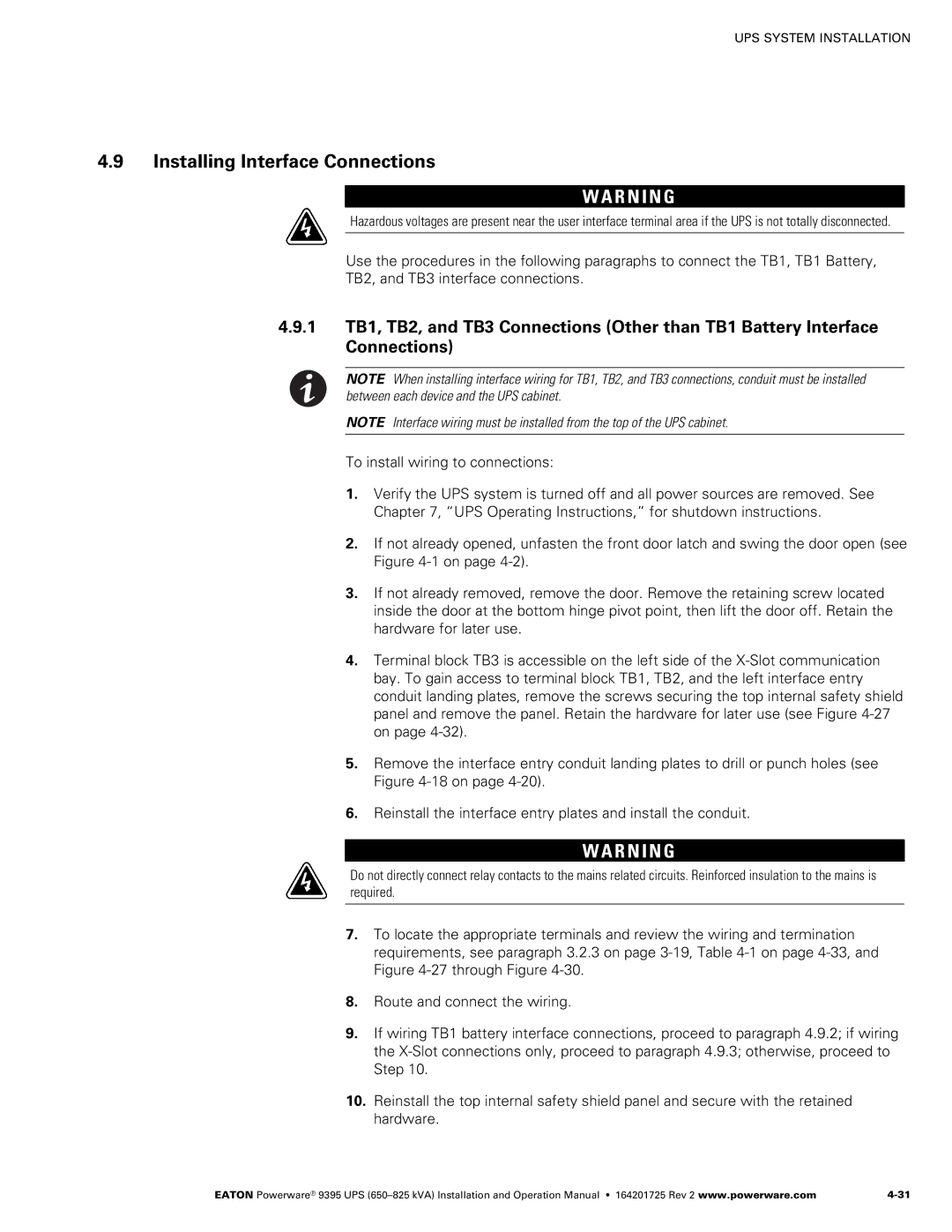
UPS SYSTEM INSTALLATION
4.9Installing Interface Connections
W A R N I N G
Hazardous voltages are present near the user interface terminal area if the UPS is not totally disconnected.
Use the procedures in the following paragraphs to connect the TB1, TB1 Battery,
TB2, and TB3 interface connections.
4.9.1TB1, TB2, and TB3 Connections (Other than TB1 Battery Interface Connections)
NOTE When installing interface wiring for TB1, TB2, and TB3 connections, conduit must be installed between each device and the UPS cabinet.
NOTE Interface wiring must be installed from the top of the UPS cabinet.
To install wiring to connections:
1.Verify the UPS system is turned off and all power sources are removed. See Chapter 7,
2.If not already opened, unfasten the front door latch and swing the door open (see Figure
3.If not already removed, remove the door. Remove the retaining screw located inside the door at the bottom hinge pivot point, then lift the door off. Retain the hardware for later use.
4.Terminal block TB3 is accessible on the left side of the X−Slot communication bay. To gain access to terminal block TB1, TB2, and the left interface entry conduit landing plates, remove the screws securing the top internal safety shield panel and remove the panel. Retain the hardware for later use (see Figure
5.Remove the interface entry conduit landing plates to drill or punch holes (see Figure
6.Reinstall the interface entry plates and install the conduit.
W A R N I N G
Do not directly connect relay contacts to the mains related circuits. Reinforced insulation to the mains is required.
7.To locate the appropriate terminals and review the wiring and termination requirements, see paragraph 3.2.3 on page 3−19, Table
8.Route and connect the wiring.
9.If wiring TB1 battery interface connections, proceed to paragraph 4.9.2; if wiring the X−Slot connections only, proceed to paragraph 4.9.3; otherwise, proceed to Step 10.
10.Reinstall the top internal safety shield panel and secure with the retained hardware.
EATON Powerware® 9395 UPS | 4−31 |
